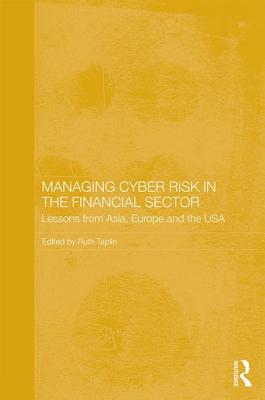Cyber risk is increasingly seen as a major problem for businesses. It takes many forms including fraud, hacking by people hostile to the business, theft by criminals of the very large amounts of customer information ("big data") held by many companies, misuse including accidental misuse of such data, loss of key intellectual property, and the resulting reputational and other damage which can result from all of these problems. This book assesses the major cyber risks to businesses and discusses how they can be managed and the risks reduced. It includes case studies of the situation in different financial sectors and case studies of the situation in East Asia and European countries.
Cyber risk has become increasingly reported as a major problem for financial sector businesses. It takes many forms including fraud for purely monetary gain, hacking by people hostile to a company causing business interruption or damage to reputation, theft by criminals or malicious individuals of the very large amounts of customer information (“big data”) held by many companies, misuse including accidental misuse or lack of use of such data, loss of key intellectual property, and the theft of health and medical data which can have a profound effect on the insurance sector. This book assesses the major cyber risks to businesses and discusses how they can be managed and the risks reduced. It includes case studies of the situation in different financial sectors and countries in relation to East Asia, Europe and the United States. It takes an interdisciplinary approach assessing cyber risks and management solutions from an economic, management risk, legal, security intelligence, insurance, banking and cultural perspective.
Get Managing Cyber Risk in the Financial Sector by at the best price and quality guranteed only at Werezi Africa largest book ecommerce store. The book was published by Taylor & Francis Ltd and it has pages. Enjoy Shopping Best Offers & Deals on books Online from Werezi - Receive at your doorstep - Fast Delivery - Secure mode of Payment
 Jacket, Women
Jacket, Women
 Woolend Jacket
Woolend Jacket
 Western denim
Western denim
 Mini Dresss
Mini Dresss
 Jacket, Women
Jacket, Women
 Woolend Jacket
Woolend Jacket
 Western denim
Western denim
 Mini Dresss
Mini Dresss
 Jacket, Women
Jacket, Women
 Woolend Jacket
Woolend Jacket
 Western denim
Western denim
 Mini Dresss
Mini Dresss
 Jacket, Women
Jacket, Women
 Woolend Jacket
Woolend Jacket
 Western denim
Western denim
 Mini Dresss
Mini Dresss
 Jacket, Women
Jacket, Women
 Woolend Jacket
Woolend Jacket
 Western denim
Western denim
 Mini Dresss
Mini Dresss






























































